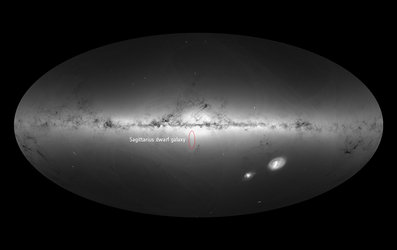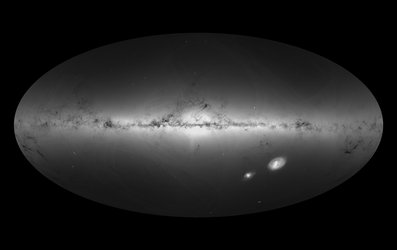

Two million stars in our Galaxy
The positions of two million stars in our Galaxy, based on data from the Tycho-Gaia Astrometric Solution, one of the products of the first Gaia data release.
The stars are plotted in Galactic coordinates and using a rectangular projection: in this, the plane of the Milky Way stands out as the horizontal band with greater density of stars. The stripes visible in the early frames reflect the way Gaia scans the sky and the preliminary nature of the first data release.
The shape of the Orion constellation can be spotted towards the right edge of the frame, just below the Galactic Plane. Two stellar clusters – groups of stars that were born together and consequently move together – can be seen towards the left edge of the frame: these are the alpha Persei (Per OB3) and Pleiades open clusters.





